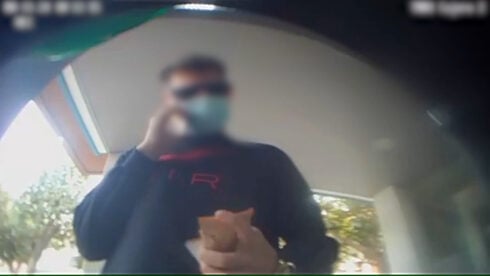SPAIN’S traffic directorate has launched a road safety campaign that contains a chilling warning ahead of the Easter holidays.
Ahead of Semana Santa when an estimated 14.6 million will take to Spain’s roads, the DGT has crunched the numbers to determine that 36 people are likely to be killed in traffic accidents over the holiday period.
The video campaign focuses on people of different ages stating that they will die on Spain’s roads this year.
With sinister music playing in the background accompanied by the screech of brakes and the sound of car accidents, the video focuses on individuals who fit the profile of those expected to die on the roads this Easter.
“Man, 46 years old,” says one. “Woman, 40, Andalucia,” says another, voicing the predictions calculated by ‘Big Data’.
It ends with the words: “Now that we know, we can avert it. Let’s make Big Data wrong.”
In another video explaining the campaign, the DGT claims Big Data has calculated the number of expected deaths during the Easter period based on algorithms and statistics and states “36 people will die on Spanish roads”. It adds that of those, 27 are men and 9 are women. Six deaths will occur in Andalucia, five in Castilla-Leon, four in Valencia and three in Galicia.
The roads are expected to be busiest at three distinct periods over Easter. The first begins on Friday April 8 and continues until Sunday evening at 10pm. While the second busy phase begins on Wednesday 13 in most places across Spain as people head off ahead of the Thursday bank holiday,
The next busiest stage will be Sunday April 17 when everyone returns home.
However in Catalunya where the bank holiday is on Monday instead of Thursday the busiest times on the roads is expected to shift to 24 hours later.
The DGT has released five important tips to improve safety on the roads.
1. Pack the car the right way: Heavier objects should be placed low and in the center of the vehicle to provide stability. Luggage and packages must be well secured to prevent flying around in the case of braking hard.
2.Everyone wearing seat belts in the vehicle, including pets.
Pets should travel either in a carrier or wearing a harness that is clipped in so that they do not move around while the car is on the road and to keep them safe in the case of an accident,
3.Take a break. The DGT advises drivers to stop for a break every 200 kilometers or two hours of travel and to stretch your legs.
4. Check your tires.
Tire pressure and condition should be checked before long journeys. If the tire tread is worn or the depth is less than 1.6 millimeters, then they need replacing. Apart from risking a penalty fine of €200, worn treads can add 6% to the braking distance.
5. Keep informed.
The DGT emphasises that it is important to know conditions on the road that could affect traffic in real time, as well as to be aware of potential weather conditions.
READ MORE:
- DGT launches seat belt campaign in Spain’s Andalucia
- New driving rules you need to know about that come into force in Spain on March 21
Click here to read more Spain News from The Olive Press.










